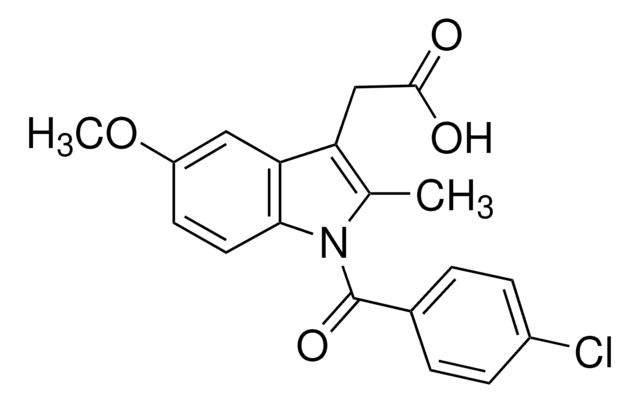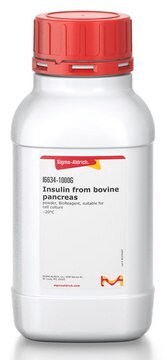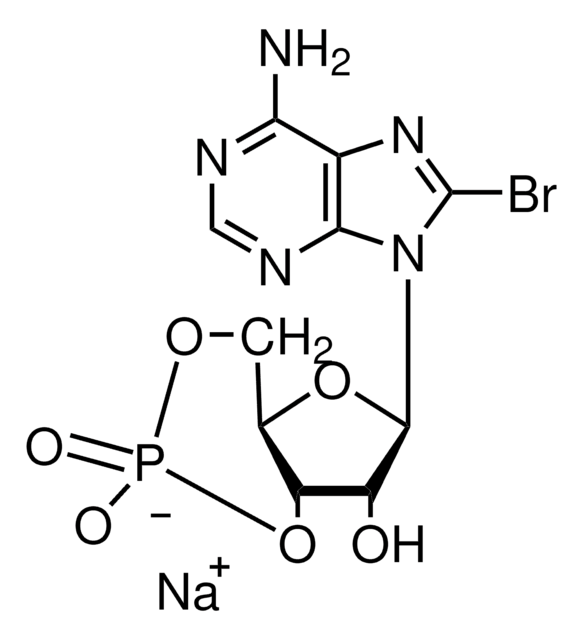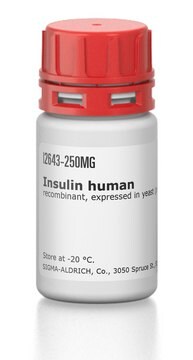Kluczowe dokumenty
I5879
3-Isobutyl-1-methylxanthine
≥99% (HPLC), powder
Synonim(y):
1-Methyl-3-isobutylxanthine, 3,7-Dihydro-1-methyl-3-(2-methylpropyl)-1H-purine-2,6-dione, 3-Isobutyl-1-methyl-2,6(1H,3H)-purinedione, IBMX
About This Item
Polecane produkty
Próba
≥99% (HPLC)
Formularz
powder
kolor
white to off-white
mp
200-201 °C (lit.)
rozpuszczalność
DMSO: 1 M (with gentle warming)
ethanol: 10 mg/mL
temp. przechowywania
−20°C
ciąg SMILES
CC(C)CN1C(=O)N(C)C(=O)c2[nH]cnc12
InChI
1S/C10H14N4O2/c1-6(2)4-14-8-7(11-5-12-8)9(15)13(3)10(14)16/h5-6H,4H2,1-3H3,(H,11,12)
Klucz InChI
APIXJSLKIYYUKG-UHFFFAOYSA-N
informacje o genach
human ... PRKAR1A(5573) , PRKAR1AP(5574) , PRKAR1B(5575) , PRKAR2A(5576) , PRKAR2B(5577)
rat ... Adora1(29290) , Adora2a(25369)
Szukasz podobnych produktów? Odwiedź Przewodnik dotyczący porównywania produktów
Opis ogólny
Zastosowanie
- in the differentiation of mesenchymal stem cells (MSC)
- as a culture medium supplement for inducing adipogenic differentiation
- as a supplement in Krebs-Ringer buffer with HEPES (KRBH) solution for inducing glucose-stimulated insulin secretion (GSIS)
- in the characterization of adipose-derived mesenchymal stem cells
- in cyclic adenosine monophosphate (cAMP) assay
- in phosphodiesterase (PDE) inhibition
Działania biochem./fizjol.
Kod klasy składowania
11 - Combustible Solids
Klasa zagrożenia wodnego (WGK)
WGK 3
Temperatura zapłonu (°F)
Not applicable
Temperatura zapłonu (°C)
Not applicable
Środki ochrony indywidualnej
dust mask type N95 (US), Eyeshields, Faceshields, Gloves
Wybierz jedną z najnowszych wersji:
Masz już ten produkt?
Dokumenty związane z niedawno zakupionymi produktami zostały zamieszczone w Bibliotece dokumentów.
Klienci oglądali również te produkty
Nasz zespół naukowców ma doświadczenie we wszystkich obszarach badań, w tym w naukach przyrodniczych, materiałoznawstwie, syntezie chemicznej, chromatografii, analityce i wielu innych dziedzinach.
Skontaktuj się z zespołem ds. pomocy technicznej












